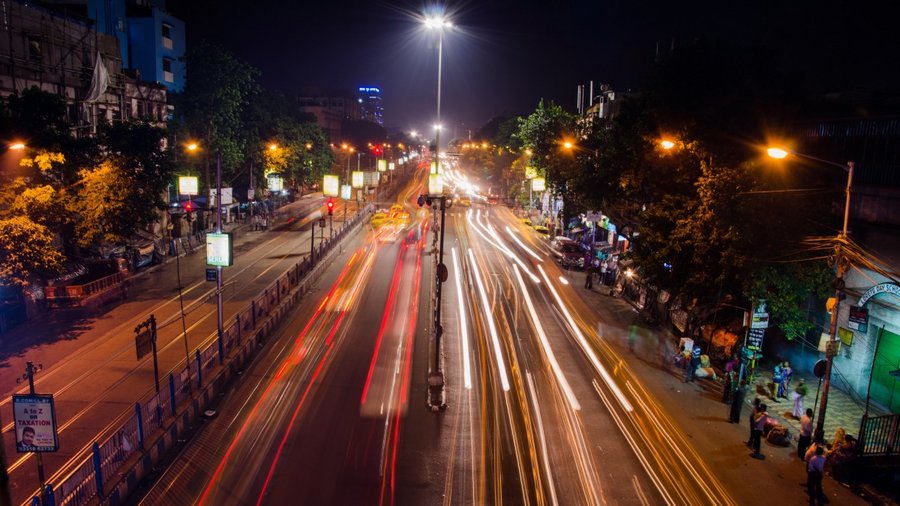Salzburg Global Fellow Aishwarya Raman discusses how artificial intelligence can make mobility safer and more efficient
In October 2020, India's prime minister sounded the clarion call to make the country a global hub for artificial intelligence (AI), urging Indians to leverage AI to solve real-world issues. The term "AI" was coined in the '50s. In this digital age, AI is embraced in the Global North across all spheres of life, with its widespread application fueled by data availability. Six decades on, AI has captured leaders' imagination in emerging economies for all the right reasons, thanks to the power it holds to transform health care, education, agriculture, mobility, and more.
The case of AI in mobility is a curious one. AI is not only about building driverless luxury cars but creating real-world impact. In Kenya and Rwanda, AI-powered drones deliver vital medical supplies to far-flung hospitals. Delivery of food, medicines, and other essentials using drones and driverless (autonomous) vehicles is a recurring topic today amidst the COVID-19 pandemic. Undoubtedly, the marginal effects of luxury adoption of AI are eclipsed by the game-changing effects of its mass adoption catalyzed by shared mobility. Evidence of such impact abounds, as can be seen below.
AI-Embedded Mobility Enhances Road Safety
Intel's MobilEye deploys Advanced Driver Assistance Systems (ADAS) - an AI application - in cars worldwide. ADAS encompasses a host of passive and active alerts - collision warning, lane departure warning, cruise/ speed control, lane-keeping, and traffic jam assistance - thereby enhancing road safety and converting cars into tech devices.
This seismic shift in the definition of automobiles from gas-fueled vehicles to technology-packed connected devices began in 2017 in India when Ola partnered with Microsoft. Ola, one of the world's largest rideshare platforms, operational in over 250 cities globally and headquartered in India, uses ADAS. With India expected to mandate ADAS in all cars only by 2022, Ola or rideshare has already shifted the paradigm of AI-powered safety from luxury vehicles to mass mobility.
The most populous Indian state, Uttar Pradesh, and the state with a flourishing information technology industry, Karnataka, are deploying AI in buses to avoid collisions and alert sleepy drivers, especially on long haul trips. Buoyed by the success of year-long pilot projects, these states are implementing ADAS in 13,000 buses cumulatively.
AI Boosts Personal Safety And Security
Using AI, Ola has launched a program called Guardian to enhance personal safety and security. Guardian sends automatic alerts to driver and customer phones and the support team whenever route deviation occurs. A route can also get designated as an unsafe route because of poor lighting, for instance, and the AI program will help drivers avoid such routes. Such AI programs make it safer for all passengers and drivers in general and women, in particular, to access mobility services at any time of the day and any place or city of their choice.
AI Improves Operational Efficiency and Quality of Public Transit Services
An Automatic Vehicle Location system uses GPS signals to track buses (or other transportation units) in real time, detects problems to inform vehicles of any changes, manages alternative routes, and provides information to passengers via apps on their mobile devices. As a first step toward fully realizing this future, India's capital, Delhi, is sharing real-time bus data with Google, which uses AI to predict bus delays and traffic jams.
AI Strengthens the Efficiencies Of Mobility Systems
AI transforms entire traffic management systems as is witnessed in Delhi, which has earmarked an investment of INR 1,000 crore (USD 130 million) in AI, depth sensors, and cameras to reduce congestion and road accidents. From improving reliability through route optimizations and predictability of pick-ups and drop-offs in the case of shared mobility (public transit, rideshare, hyperlocal deliveries), AI can do it all! Furthermore, AI can reduce inefficient trips and CO2 emissions from passenger mobility and logistics. Driverless hydrogen trucks or electric vehicles use AI to improve efficiencies and reduce environmental impact and operational costs.
Indeed, AI is the next great inflection point of mobility innovation. It empowers women and persons with disabilities by enhancing the safety and accessibility of mobility systems and cities. Overall, by truly harnessing the power of AI, cities around the world can enable mobility to achieve the three pillars of sustainability: equity (socially just mobility), environment (environmentally friendly mobility), and economy (economically viable mobility), creating real-world impact without fail.
Aishwarya Raman is Head of Research at the Ola Mobility Institute - a policy research and social innovation think tank. She's a Salzburg Global Fellow taking part in the Japan-India Transformative Technology Network.


